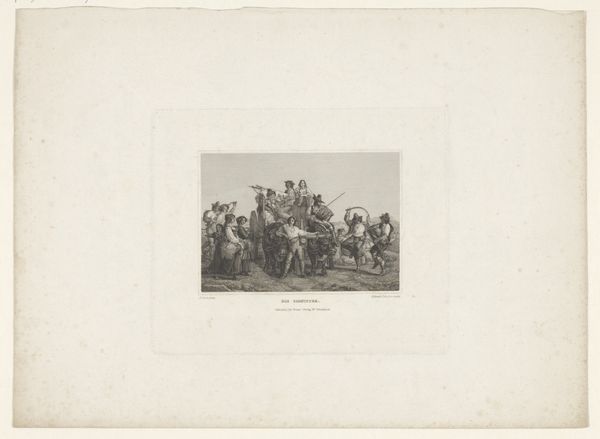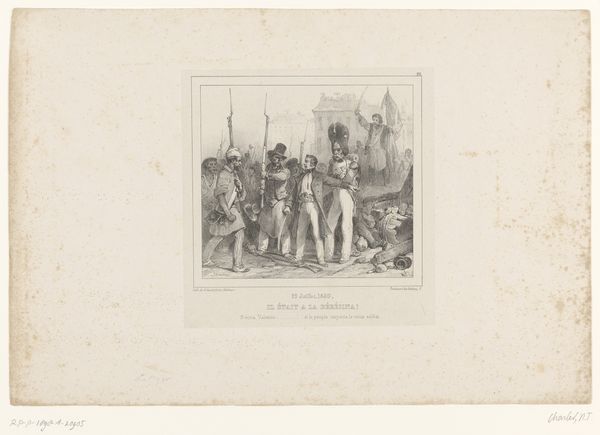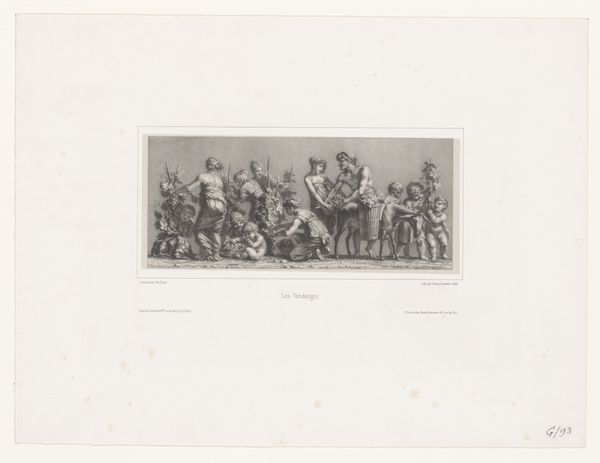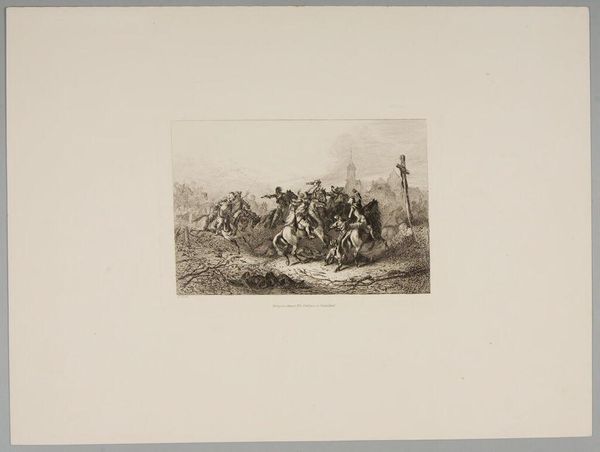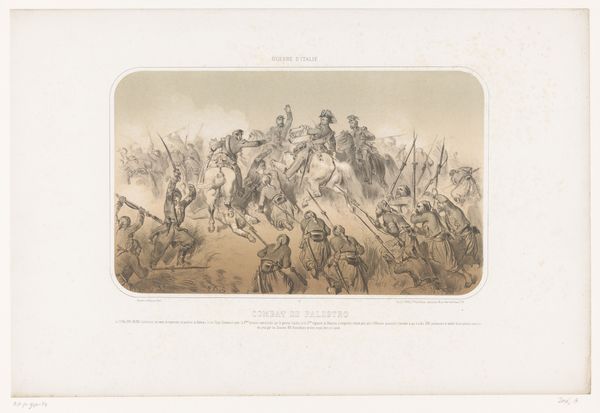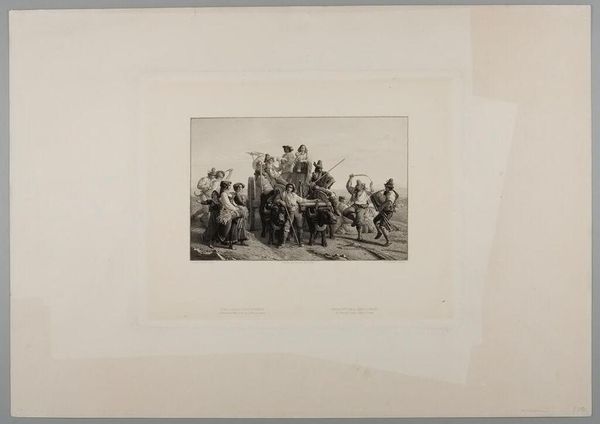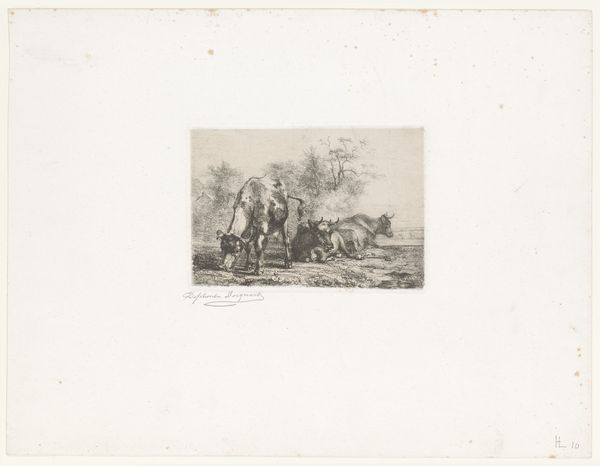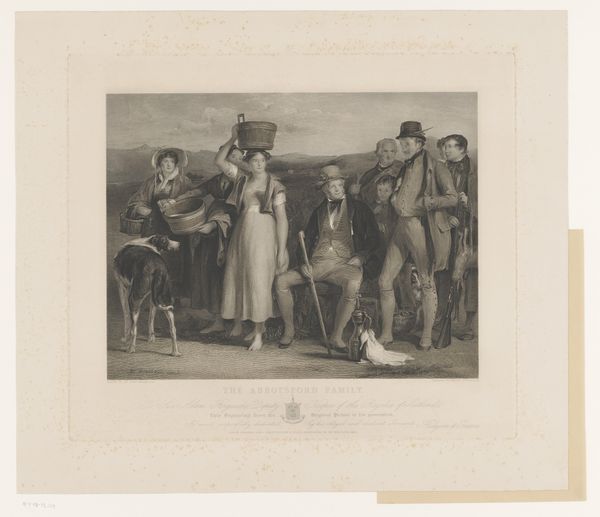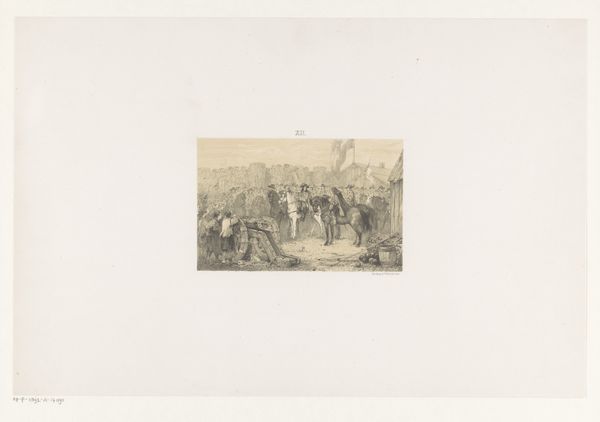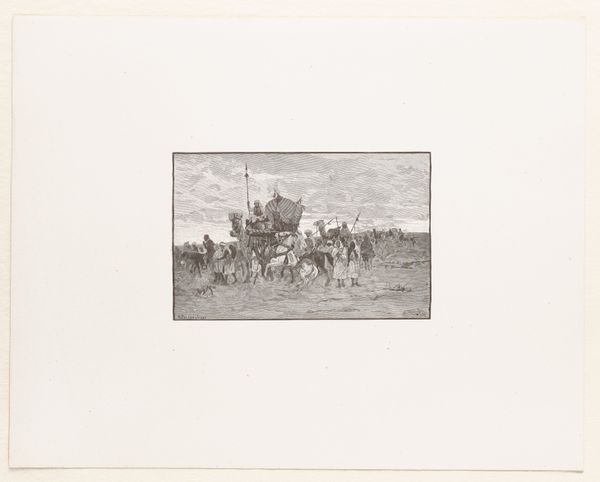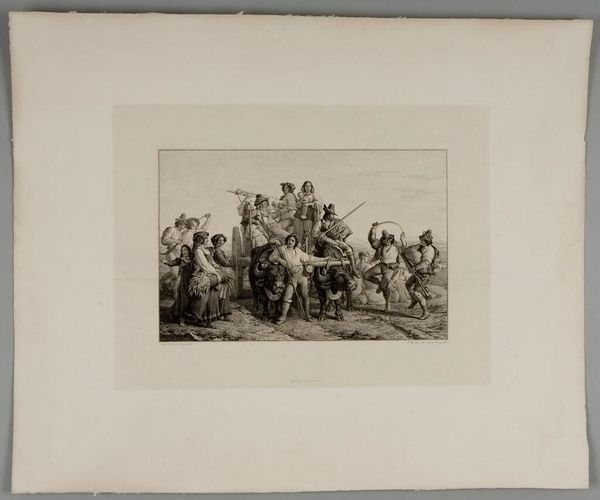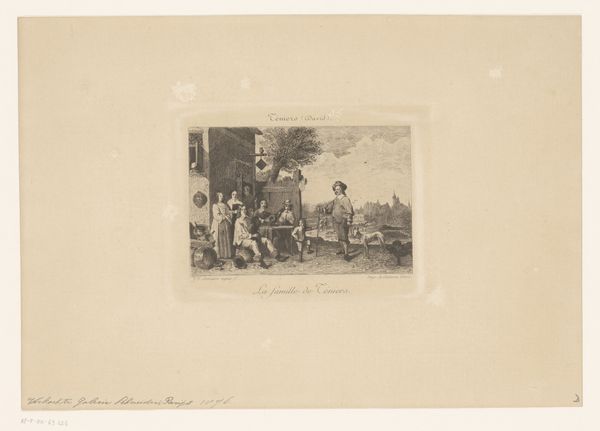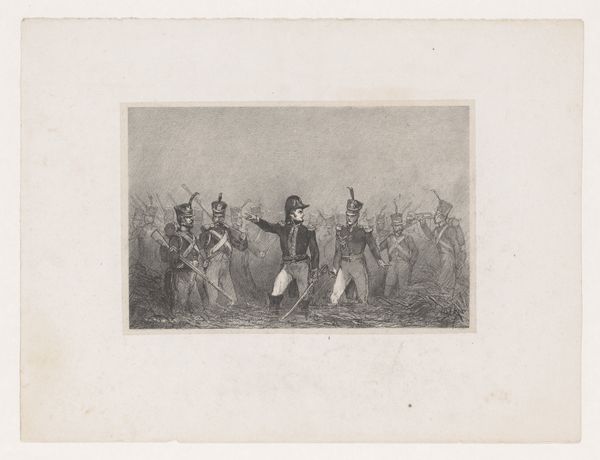
print, engraving
# print
#
old engraving style
#
landscape
#
romanticism
#
genre-painting
#
engraving
Dimensions: height 270 mm, width 345 mm
Copyright: Rijks Museum: Open Domain
Curator: Welcome. We are looking at "Oogstfeest," or "Harvest Festival," a print made by Théophile Victor Desclaux in 1844. Editor: It looks like a snapshot from a much earlier time. The detailed engraving captures this procession or celebration, and there’s a real texture to the landscape. I can almost feel the rough spun cloth and see the grain of the wood in the wagon. Curator: The image reflects a specific romantic view of peasant life that was popular then, a kind of nostalgic look at rural traditions during a period of industrial change. The harvest, naturally, becomes a symbol. Editor: Symbol, yes, but look at the actual labour depicted, not idealized but also not dismissed. There's an acknowledgment of hard work in that procession, from the clothing they wear to the tools or instruments they carry. The weight of their lives, I suppose, as workers and community members. How does that connect with our modern ideas about art? Curator: Absolutely. The engraving would have been disseminated widely, available for viewing in homes and public spaces, reinforcing shared notions about the value of agrarian life, while, it is an artistic creation crafted in print workshops serving very different interests. Consider the social position of someone who would produce and sell a detailed romantic view, a delicate craft. Editor: Interesting! The artist becomes another kind of worker within that frame. One supported, ideally, by this image's social resonance as more than art but craft itself. Curator: Precisely, and that resonates powerfully, making me reflect on labor then, and consumption today. Editor: This print, more than just a picture, shows what society values, its roots—literally and figuratively—through its art. Curator: And how easily these depictions become part of national identities or artistic movements as a result of accessibility through this medium. Editor: Indeed. This offers not just aesthetic insight, but also some material realities worth exploring.
Comments
No comments
Be the first to comment and join the conversation on the ultimate creative platform.
